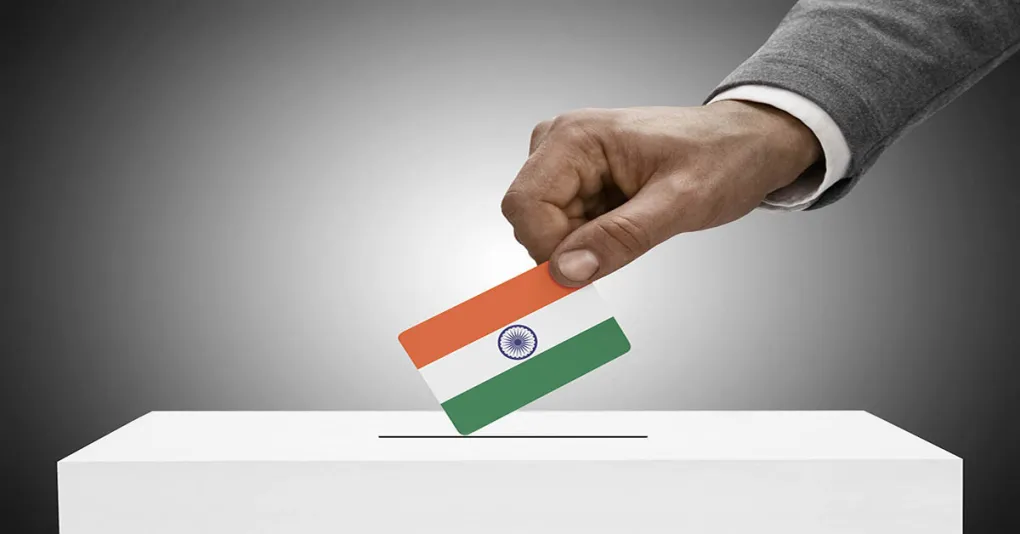How To Vote India?
Voting is a fundamental right and a crucial part of democratic participation in India. If you’re an Indian citizen who is eligible to vote, registering is the first step toward exercising this right. This guide will walk you through the process of voter registration in India, ensuring you’re prepared to cast your vote when the time comes.
Why Register to Vote?
Registering to vote empowers you to participate in the democratic process, influencing decisions on governance, policy-making, and development. By voting, you:
- Choose representatives who align with your views.
- Hold elected officials accountable.
- Contribute to the democratic functioning of the nation.

Who Can Register to Vote?
To register to vote in India, you must:
- Be a citizen of India.
- Be at least 18 years old on the qualifying date (usually January 1st of the year).
- Be a resident of the polling area of the constituency where you want to register.
- Not be disqualified from voting due to any law or court order.
Steps to Register to Vote
The Election Commission of India offers online voter registration for Indian citizens who have reached the age of 18 on the qualifying date. Registering to vote is a fundamental step in participating in India’s democratic process. Here are the steps to register online:
1. Determine Your Eligibility: Ensure that you meet all the eligibility criteria mentioned above. Confirm that you are not already registered in another constituency, as duplicate registrations are not allowed.
2. Gather Necessary Documents: To register to vote, you will need the following documents:
- Proof of Age: Birth certificate, passport, school certificate, or any other official document.
- Proof of Residence: Ration card, passport, driving license, utility bill, or any other official document that verifies your address.
3. Choose Your Registration Method: You can register to vote in India using one of the following methods:
- Online: Through the National Voters’ Services Portal (NVSP) or the Election Commission of India’s (ECI) website.
- Offline: By visiting the local Electoral Registration Office (ERO), or during special voter registration drives organized by the ECI.
4. Online Registration Process: Visit the NVSP or ECI Website: Go to the National Voters’ Services Portal or ECI website.
- Fill Form 6: Form 6 is for new voter registration. Complete the form with accurate details.
- Upload Documents: Attach scanned copies of the required documents for proof of age and residence.
- Submit the Application: Review the information and submit the form online.
5. Offline Registration Process
- Obtain Form 6: Collect Form 6 from the local ERO, Booth Level Officer (BLO), or download it from the ECI website.
- Fill the Form: Complete the form with accurate details.
- Attach Documents: Attach photocopies of the required documents for proof of age and residence.
- Submit the Form: Submit the completed form and documents to the local ERO or BLO. You can also submit it at designated locations during voter registration drives.
6. Verification Process: After submission, a BLO will visit your residence to verify the details provided in your application. Ensure you are available during this verification process.
7. Check Your Voter Registration Status: Once your application is processed, you can check your voter registration status:
- Online: Visit the NVSP or ECI website and use the “Track Application Status” feature.
- SMS: Send an SMS to the designated number provided by the ECI (varies by state).
- Call: Contact the voter helpline at 1950 (toll-free).
Deadlines and Important Dates
Voter registration is an ongoing process, but it’s essential to register well before an election to ensure you can vote. Special summary revision drives are conducted annually, usually around October to January. Stay informed about these dates to ensure timely registration.
Updating Your Registration
You need to update your voter registration if:
- You move to a new address.
- You change your name.
- You want to change your constituency.
Use Form 8 for corrections, Form 8A for transposition of entry within the same constituency, and Form 6 for transposition to a different constituency.
Conclusion
Registering to vote in India is a straightforward yet vital process that enables you to participate in the democratic process. By following the steps outlined in this guide, you can ensure your name is on the electoral roll, making you eligible to vote in the next election. Remember, your vote is your voice—make sure it’s heard.
For more information, visit the National Voters’ Services Portal or the Election Commission of India.
To check your voter registration status, visit the official website of the election commission in your country or state. Enter your details, such as name and ID number, to access your registration status. Alternatively, contact the local election office for assistance and verification of your voter registration.
To find your designated polling place or voting location, you can check your voter registration card, visit the official website of your country’s election commission, or use online tools provided by election authorities. Additionally, you can contact your local election office or check with community centers or libraries for information on polling locations in your area.
To use an Electronic Voting Machine (EVM), enter the polling booth and present your voter ID. The poll officer will activate the machine. Press the button next to your preferred candidate’s symbol. The machine will beep to confirm your vote. Check the VVPAT slip for verification. Your vote is cast securely and confidentially.
The required identification to vote varies by country and jurisdiction. Generally, acceptable forms include a government-issued photo ID (driver’s license, passport) or voter registration card. Check with your local election commission for specific requirements in your area.
